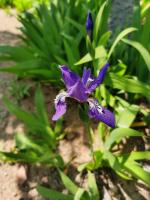Is Joshua Tree a Yucca Plant?
Joshua Tree (Yucca brevifolia) is a unique and iconic plant that is native to the Mojave Desert of California. It grows up to 40 feet tall and is characterized by its spiky, palm-like leaves and creamy white flowers that bloom in the spring. Although it is commonly referred to as the Joshua Tree, it is actually a type of yucca plant.
The Yucca Plant Family
The botanical family Yucca includes around 40 different species of succulent plants that are native to arid regions of North and Central America. They are characterized by their thick, fleshy leaves and tall, spiky stems that bear clusters of white, cream, or yellow flowers. Other members of the Yucca family include the Spanish bayonet (Y. aloifolia), the beaked yucca (Y. rostrata), and the banana yucca (Y. baccata).
Distinctive Characteristics of the Joshua Tree
Despite being a yucca plant, the Joshua Tree has some unique features that distinguish it from other members of the family. One such feature is its size. An adult Joshua Tree can reach up to 40 feet in height and have a diameter of up to three feet. Additionally, the leaves on the Joshua Tree are longer and more slender than those of other yucca plants.
The Joshua Tree also has a distinctive growth pattern. It grows in clusters, with each cluster consisting of several individual plants that grow out from a single point. These clusters can range in size from a few feet to several acres. The Joshua Tree is also known for its deep, extensive root system that enables it to survive in the harsh desert environment.
Ecological Importance of the Joshua Tree
The Joshua Tree is an important species in the Mojave Desert ecosystem. It provides food and habitat for a variety of desert animals, including the desert tortoise, the black-tailed jackrabbit, and the Joshua Tree woodrat. The flowers of the Joshua Tree are also pollinated by the yucca moth, a small insect that is exclusively dependent upon the Joshua Tree for its survival.
However, the future of the Joshua Tree is uncertain. Climate change and habitat loss are two significant threats that are putting the species at risk. Warmer temperatures and changing rainfall patterns are making it harder for the Joshua Tree to survive in its native habitat, while human activities such as development and off-road vehicle use are destroying its habitat.
Conclusion
In conclusion, the Joshua Tree is indeed a yucca plant, but one that has some unique characteristics that set it apart from other members of the Yucca family. As an iconic symbol of the Mojave Desert, the Joshua Tree is an important species in its own right, as well as a vital part of the desert ecosystem. It is up to us as individuals and communities to work towards preserving this remarkable plant for future generations.

 how many times do yo...
how many times do yo... how many planted tre...
how many planted tre... how many pine trees ...
how many pine trees ... how many pecan trees...
how many pecan trees... how many plants comp...
how many plants comp... how many plants can ...
how many plants can ... how many plants and ...
how many plants and ... how many pepper plan...
how many pepper plan...































